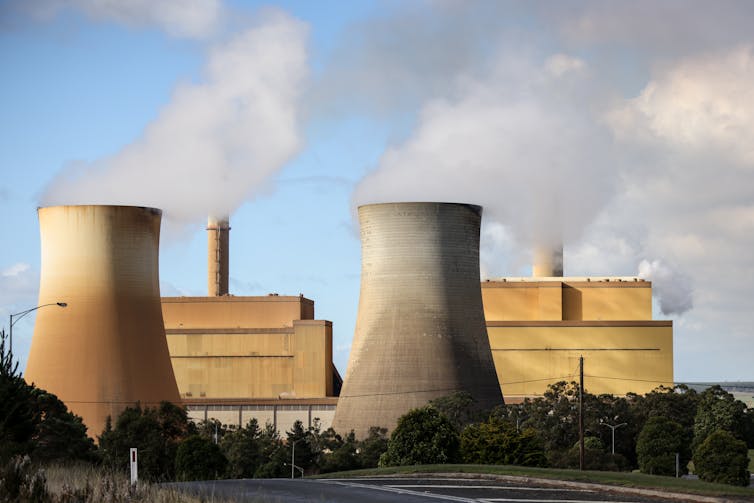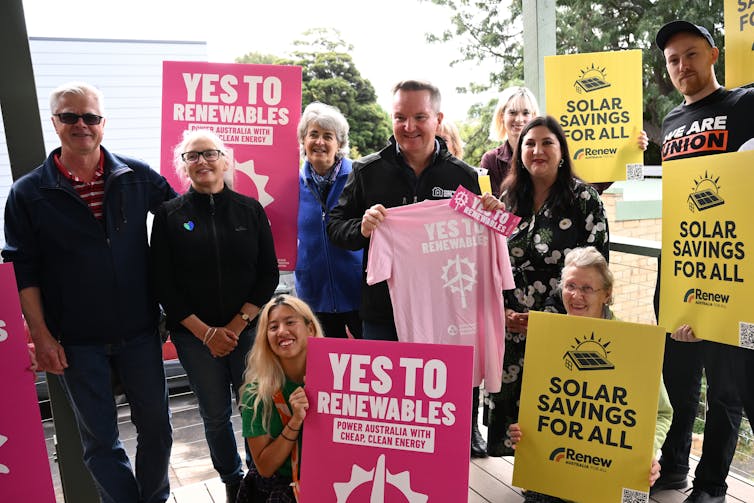5 huge climate opportunities await the next parliament – and it has the numbers to deliver
Australians have returned an expanded Labor Party to government alongside a suite of climate-progressive independents. Meanwhile, the Coalition – which promoted nuclear energy and a slower renewables transition – suffered a historic defeat.
Labor also looks set to have increased numbers in the Senate, where the Greens are likely to hold the balance of power.
These numbers mean support for progressive climate and energy policy in Australia’s 48th parliament is shaping as stronger than the last. So what does this mean as Australia seeks to position itself as a leader in the global net zero economy?
In its first term in government, Labor laid the groundwork for stronger climate action, including legislating an emissions-reduction target and putting crucial policies and organisations in place. The next parliament will be well-placed to build on these foundations. Here, we explain where key opportunities lie.

1. National emissions target for 2035
By September this year, all signatories to the global Paris Agreement must set emissions reduction targets out to 2035.
Labor is waiting on advice from the Climate Change Authority before setting its target. The authority’s initial advice last year suggested a target between 65% and 75%, based on 2005 levels.
Understand how AI is changing society
Some countries have already set their targets. The United Kingdom, for example, will aim for a reduction of at least 81% by 2035, based on 1990 levels.
2. A firm plan for net-zero
Australia has committed to reaching net-zero emissions by 2050. Getting there will require innovation and investment across the economy. In the last term of government, Labor began developing net-zero plans for each economic sector. They comprise energy, transport, industry, resources, the built environment, and agriculture and land.
The plans are due to be finalised this year. They will act as a tangible map for Australia to meet both net zero and the 2035 emissions-reduction target, and are keenly awaited by state governments, industry and investors.
This policy area presents the broadest opportunity for the crossbench to exert influence for greater ambition, scale and pace. Neither the 2035 target nor the sector plans need to go through parliament – however they could feature in broader parliamentary negotiations.
Separately, the Safeguard Mechanism will be reviewed in 2027, during this parliament. The policy aims to reduce emissions reductions from Australia’s biggest greenhouse-gas polluters. It is key to reaching net zero in Australia’s industrial sector, and an important moment to ensure the policy reduces emissions at the rate needed.

3. Bidding to host COP31
Australia is bidding to host next year’s United Nations global climate talks, or COP, in partnership with Pacific Island nations. The bid was opposed by the Coalition.
A decision on the COP host is expected in June. If Australia succeeds, the federal government will seek to use the high-profile global gathering to showcase its climate credentials – and there will be high expectations from Pacific co-hosts. So all policy between now and then really matters.
4. An energy system to make Australia thrive
Energy produces about 70% of Australia’s emissions. Tackling this means reducing emissions from electricity through renewable generation. Elsewhere in the economy, it means switching from gas, petrol and diesel to clean electricity.
The government’s plan to reach 82% renewable energy by 2030 remains crucial. Australia’s electricity system is expected to reach around 50% renewable energy this year. But there is more work to do.
A review of the National Electricity Market is due this year. It is expected to recommend ways to promote greater investment in renewable generation and storage. This includes what policy might follow the Capacity Investment Scheme, a measure to boost renewables investment which will be rolled out by 2027.
Faster action on the renewable shift can also be achieved through the Australian Energy Market Operator’s next Integrated System Plan – the nation’s roadmap for guiding energy infrastructure and investment.
Labor also has scope to improve energy efficiency, and better match energy demand and supply – especially at times of peak energy use. The government’s commitments to subsidise home batteries, and expand the Clean Energy Finance Corporation, will help achieve this. The crossbench, including the Greens, is likely to seek greater investments to reduce household energy use and costs.
Beyond this, Australia’s electricity grid needs to be double the size of what’s currently planned, to power the entire economy with clean energy.

5. Leverage clean energy export advantages
Australia generates about a quarter of its GDP from exports – many of them emissions-intensive such as fossil fuels, minerals and agricultural products.
In his election victory speech, Prime Minister Anthony Albanese urged Australia to seize the moment at a time of global economic disruption. Key to this will be building on the Future Made in Australia agenda and ensuring Australia makes the most of its competitive advantages as the world transitions to net-zero.
This will include:
- leveraging a strong reputation as a reliable trade partner
- capitalising on our world-leading solar and wind energy resources to produce low-emissions goods for export
- developing the industry around critical minerals and rare earths needed in low-emissions technologies
- helping metals and minerals sectors achieve net-zero emissions pathways.
This will be central to trade negotiations in the years to come. Realising Australia’s green exports aspiration requires action abroad as well as at home.
A game-changing decade
This decade is crucial to Australia’s future economy, and to the success of Australia’s long-term transition to net zero emissions. Our work has shown Australia can slash emissions while the economy grows.
The question now is how quickly the re-elected government – indeed, the next parliament – can realise Australia’s ambition as a renewable energy superpower.
The next three years will provide vital opportunities and they must be seized – for the sake of our energy bills, our economic prosperity and Australia’s reputation on the world stage.
댓글
댓글 쓰기